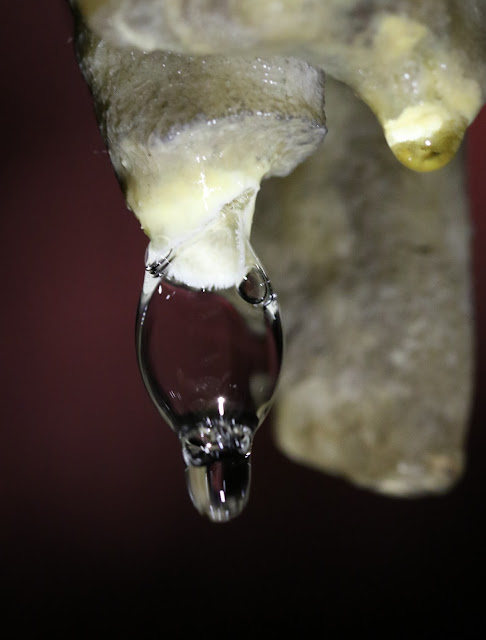
We're not exactly sure why the water is dripping off the end of a bubble instead of off the end of the formation itself. Perhaps a thin layer of calcite is providing a little extra structure. Or maybe the degassing of the CO2 makes the bubbles form and the conglomeration of bubbles makes one main bubble that's stronger. When we spotted this bubble the second day, it had changed from a single bubble to this:

Not only are there bubbles, there are also spouters (yes, that's the very technical term-ha!), when the water spouts out the side of a speleothem.
These spouters were crazy. And some would change the angle of spouting depending on water pressure (I think). We'd see it spraying out to the side and the next hour it would be almost straight down.

The pools in the cave were filling.

Slowly the rimstone dams will grow. It wasn't that long ago that some of this floor was covered with sand and dirt. It's been restored due to numerous lint and restoration camps.
And I'll leave you with just a few more photos of the hydrological oddities in Lehman Caves during mid-February, 2017:
I love all the mysteries that caves still contain!





























4 comments:
Fantastic pics. Thanks!
Great pictures! Cool water droplets and spouters!
Super photos! How exciting to see the cave active this spring!
Thanks for sharing info. Keep up the good work...We hope you will visit our blog often as we discuss topics of interest to you
Camps in Jaisalmer
Post a Comment